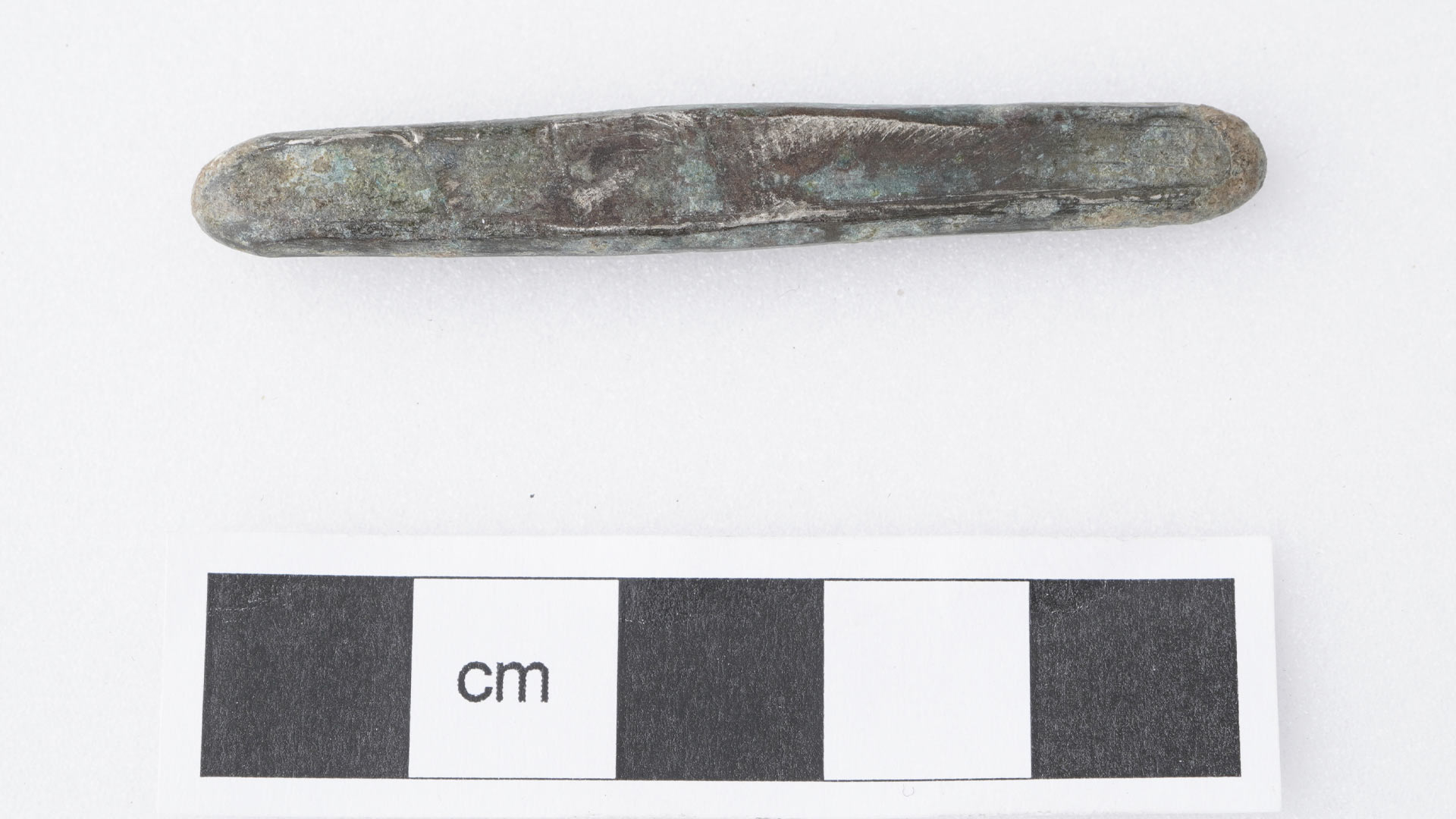Dr Nicola George’s analysis confirms ingot found on Isle of Man is Viking treasure

Dr Nicola George, Research Technical Professional for Archaeological Materials, played a key role in validating an ingot as ‘treasure.’ The ingot was found on the Isle of Man last month by metal detectorist John Smart.
To classify as treasure under the Treasure Act 2017 on the Isle of Man, an object must meet specific criteria. One requirement is that the object must contain at least 10% precious metal, like silver or gold. The 1000-year-old ingot was taken to the Elizabeth Slater Labs in the Department of Archaeology, Classics, and Egyptology for scientific analysis to confirm the precious metal content.
What scientific techniques did they use to analyse the ingot?
Firstly, imaging technician JR Peterson photographed the ingot. Then, the lab team obtained initial data using portable X-ray fluorescence (pXRF). But, “pXRF only provides information about the subsurface,” Dr George explained. So, they used a second analytical instrument: scanning electron microscopy with energy dispersive spectroscopy (SEM-EDS). “SEM-EDS allows for a combined microstructural and elemental investigation, and it's much more accurate than pXRF, despite the higher limits of detection,” Dr George explained further.
After using the two techniques, the analysis showed that the ingot was at least 88% silver. This allowed it to be declared as treasure.
How did the University of Liverpool and Manx National Heritage come to collaborate?
Professor Harold Mytum facilitated the collaboration. He is a staff member in the Department of Archaeology, Classics and Egyptology and also the Director of the Centre for Manx Studies. At the University of Liverpool, archaeological research labs are well-equipped to analyse objects such as the ingot. Dr George emphasised that "we are very lucky to have both an impressive suite of instruments, and a broad range of technical expertise in archaeological science.”
Future Endeavours
The team is now working with the Shropshire Museum. They are investigating a 4th-5th century hack silver hoard. They're already excited about their discoveries. More information on that project will be coming soon.
Dr George and the Elizabeth Slater Labs team are keen to continue and start new collaborations. They want to help heritage institutions and smaller archaeological groups that often lack the same resources. This is a priority for the next 12 months, she explained:
Archaeologists have a strong duty to make community heritage accessible to as many people as possible…we hope to share deeper insights into past societies with the public, enhancing exhibitions and engaging the public in new ways.” And that “we have state-of-the-art specialised analytical instruments and a wide range of highly skilled experts in materials science, including academic staff, technical staff, PGRs, and very talented master's students.
The ingot is displayed in the Viking Medieval Gallery, located at the Manx Museum in Douglas. For questions about analysing archaeological material, please get in touch with Dr George.